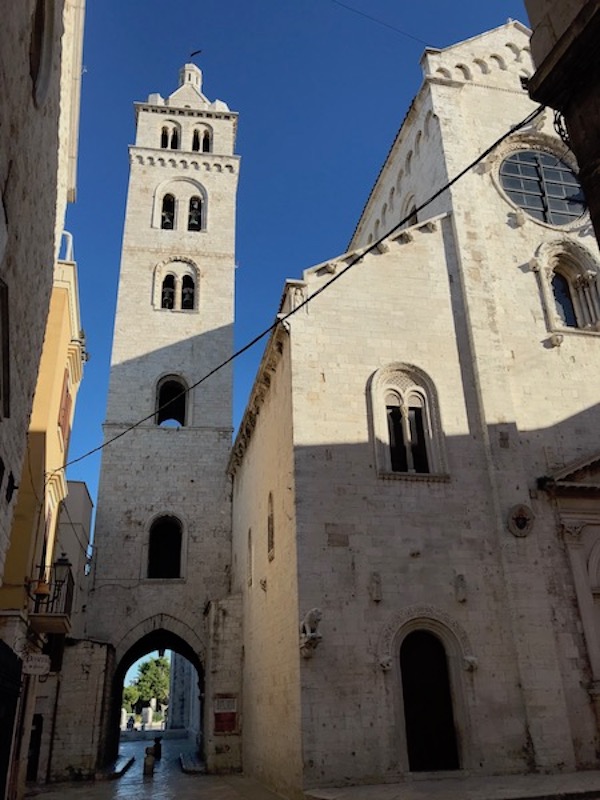Our Blog - Southern Italy - Castel del Monte, Andria, and Barletta
Castel del Monte was built in 1240 by Frederick II, up on the top of a 540 meter tall hill on lands that he had inherited from his mother. As you an see, it somewhat sticks out as you drive up to it. An interesting piece of trivia is that Castel del Monte is such an iconic castle that it appears on the back of the Italian 1 centime euro coin (see a picture here, scroll down to Italy).


It is actually quite unique (or odd, depending on your viewpoint) in the architectural style and design. While it looks very imposing, there is no moat or drawbridge, so while it was on a hill, some question if it was ever intended to be a defensible fortress.The fortress is an octagonal prism with an octagonal tower at each corner. An eight-sided courtyard occupies the center, and between the towers and the courtyard are 8 rooms. The octagonal shape is a bit odd for buildings and historians have debated the logic behind the shape. Perhaps it is because the octagon is an intermediate symbol between a square (representing the earth) and a circle (representing the sky) ... perhaps he was inspired to build to this shape by either the Dome of the Rock in Jerusalem, which he had seen during the Sixth Crusade, or by the Palace Chapel of Aachen Cathedral. We walked around and got a view of basically all sides.


The ornate main entrance features elements from classical design and may have been influenced by his interest in Greco-Roman architecture. There are only a few little windows up near the top, although they do have some nice decoration around them.


From here, you can actually see the blue of the Adriatic Sea behind the seaside town of Barletta (well, we think it was Barletta based on the compass direction).

We were planning to have lunch near the castle before heading to Trani but there was nothing nearby, so we decided to head to Andria for lunch instead. We didn't know anything about Andria but a few information signs up near the castle talked about various "Frederick II sights" in Andria. We found a parking space near the downtown and had a "traditional cheese and meat" platter at a little place nearby. The jars are all olive oils. This area is one of the largest olive oil producers in Italy and they provided 5 different flavors of olive oil for the bread: Thyme (green), Lemon (yellow), Orange (orange), garlic (purple-ish), and chili (red). If we weren't flying home, I would have picked up a few bottles!


The Andria Cathedral was built by the Normans in the 12th century on top of an earlier small church of the 7th-8th century, which forms the present crypt. Changes were done in the mid-14th century in the Late Gothic style, and again later in the Baroque style. We never got to see the interior as it was closed during the afternoon and we didn't want to wait around until 5pm for it to reopen.



The Colossus of Barletta is a large bronze statue of an Eastern Roman Emperor, nearly three times life size. Nobody really knows who it is but is supposedly an emperor based on his gesture as if he is delivering a speech, the armor that is worn over a short tunic and the cloak that is draped over his left arm, which is a portrait convention that goes back to Augustus. The statue reportedly washed up on a shore, after a Venetian ship sank returning from the sack of Constantinople in the Fourth Crusade in 1204.

Barletta Cathedral of Santa Maria Maggiore was built in two different styles, Romanesque and Gothic, from the 12th century to the 14th century. The bell tower is located on the northern side, and gives access to the castle through an archway under which are remains of the ancient church's pavement. It also wasn't open, so we didn't see the interior.


The Barletta Castle started out as a Norman castle in the 2nd half of the 12th century, and expanded by the Swabians starting in the 13th century. The interior is constructed on a quadrangular plan and the bastions and large moat were added in the 16th century. You'll get tired of hearing this, but we didn't go inside this one, either.




